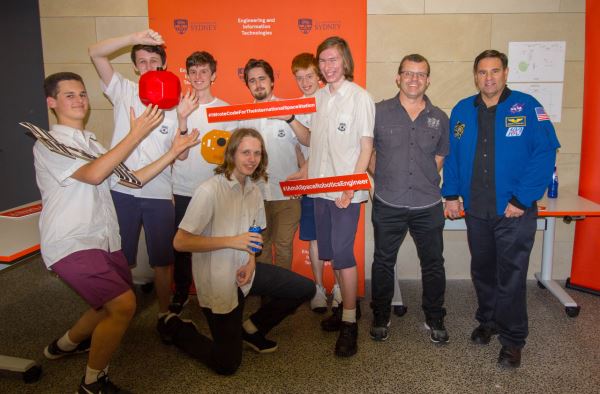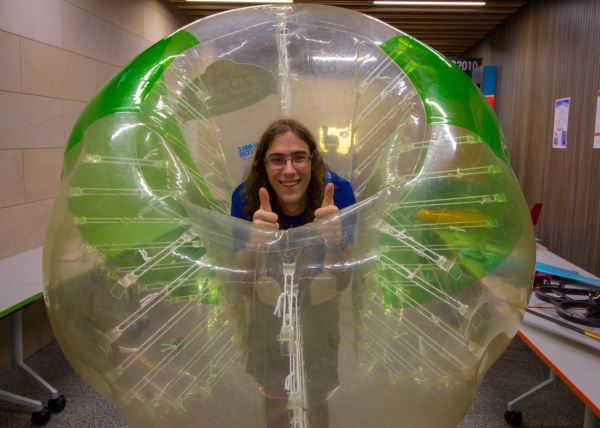Teams from five NSW high schools last week watched as computer code they had written was used to control NASA robots inside the International Space Station (ISS).
The students from Gosford High School, James Ruse Agricultural High School, Mosman High School, Sydney Boys High School and Sydney Technical High School gathered with parents, teachers and space enthusiasts to watch the 2017/18 championships of the Zero Robotics international high school programming competition.
The NSW schools beat out more than 200 schools from around the world to make it to the finals event.
Sydney Boys High School and Sydney Technical High School performed particularly well in the competition, making it to the semi-finals but narrowly missing out on progressing to the Championship Match.
James Ruse Agricultural High School took out first place in the Zero Robotics Virtual Championship, a separate competition in which teams who hadn’t made it to the Zero Robotics Championship finals got the chance to compete virtually with one another.
Test of coding skills
Organised by NASA and top tech university Massachusetts Institute of Technology (MIT), the competition was live-streamed across the globe, including at an on-campus University of Sydney event.
The Zero Robotics competition challenged students to test their coding skills on basketball-sized NASA robots known as SPHERES (Synchronized, Position Hold, Engage, Reorient Experimental Satellites) which float in zero gravity in the ISS.
As one of the top two teams in the virtual competition, the James Ruse students saw their code used to move the SPHERES in the ISS.
The students said they were “ecstatic” to have won the virtual title.
The Zero Robotics competition progressed through multiple rounds of increasing complexity during 2017 before culminating in the final championship event this week, which saw the code that was written by the students being used to move the robots inside the space station, racing against robots controlled by students around the globe, to complete a set of tasks.
Record number of NSW students
As part of its STEM outreach activities, the University of Sydney supported more than 300 Year 9-12 students from 56 high schools across NSW in the Zero Robotics competition. This year, the competition was expanded to allow more high school students to participate (up from 20 schools last year).
This included for the first time, schools in rural and regional areas such as Orange and Kew.
Sixty current University of Sydney Engineering and IT students and recent graduates volunteered to mentor the high school students this year.
Over nine months, mentors guided the teams through the process of learning the computer code, maths and physics behind the motion of the robots, while also helping students develop valuable soft skills including teamwork, effective communication and international collaboration. In the finals, teams were made up of international alliances of three schools, who had to work together across cultural, language and time-zone challenges to develop their code for the competition.
First generation of local space engineers
“Participating in Zero Robotics allows high school students to advance their skills in engineering, science, maths and computing,” said University of Sydney Executive Director of Space Engineering Warwick Holmes.
“In previous years we have seen some of these students be inspired to continue studying these subjects at university. With the Australian government recently announcing plans to establish our nation's own space agency, these competing high school students could very well be among Australia's first generation of local space engineers.”
Zero Robotics competition coordinator Penny Player, who is studying mechatronics engineering and physics at the University of Sydney, said Zero Robotics proves that anyone, of any age, can learn to code if you’ve got the drive to learn.
“Zero Robotics offers students that motivation – it’s just like playing a video game, except that it’s actually happening in real life, in space.”
This is the third year Australian schools have competed in Zero Robotics.


